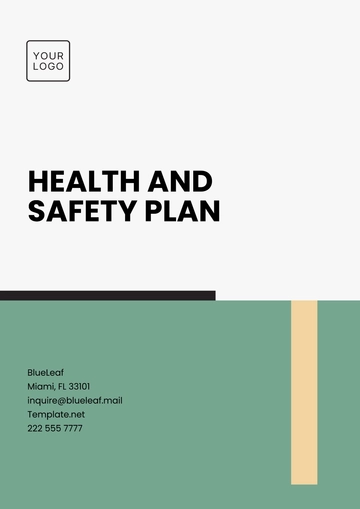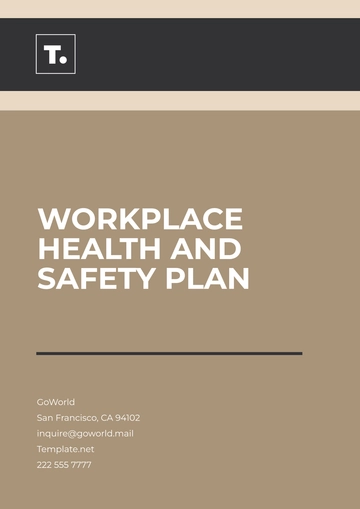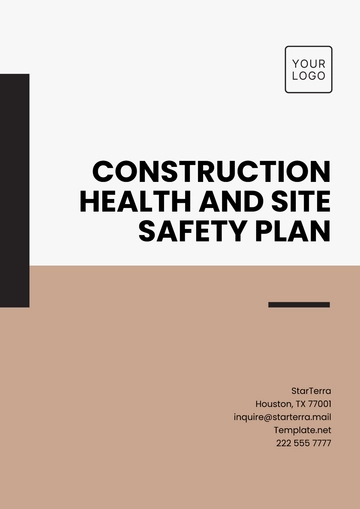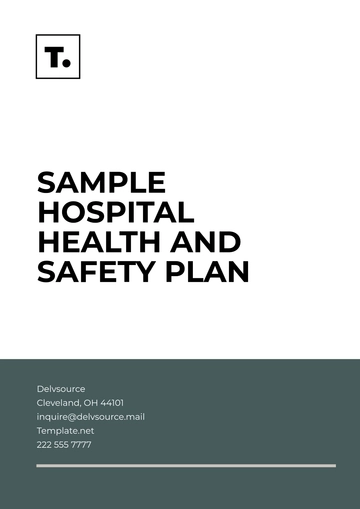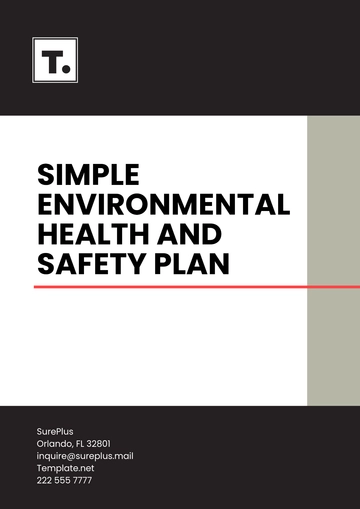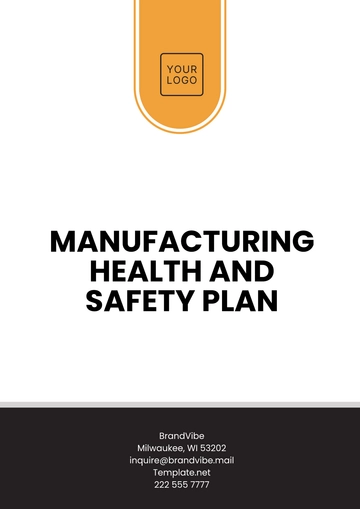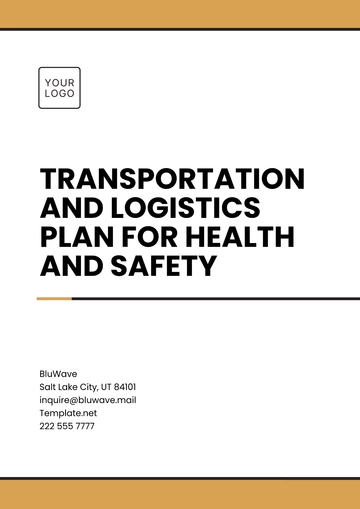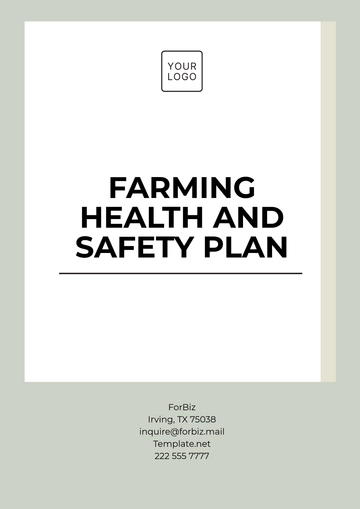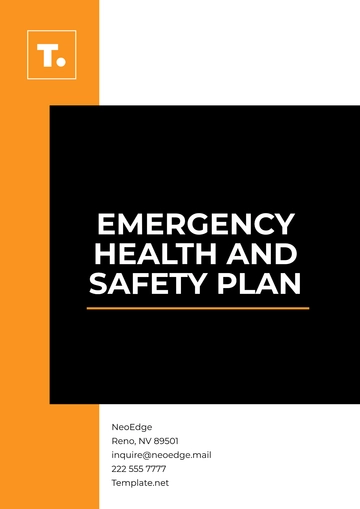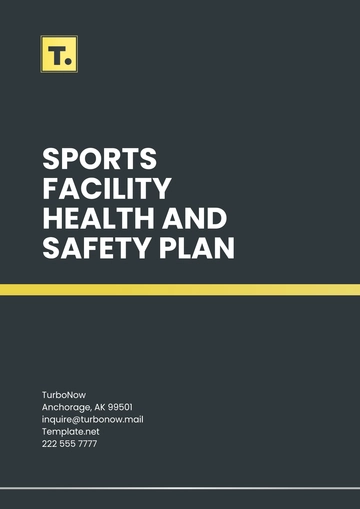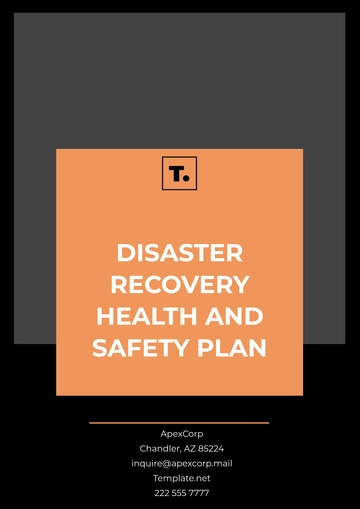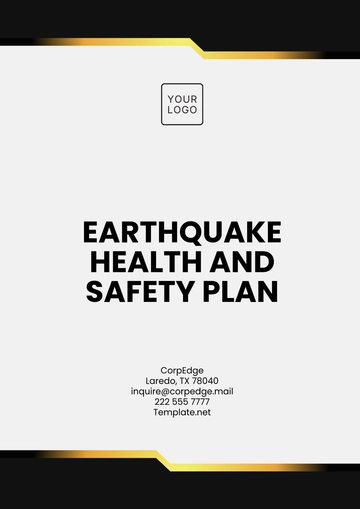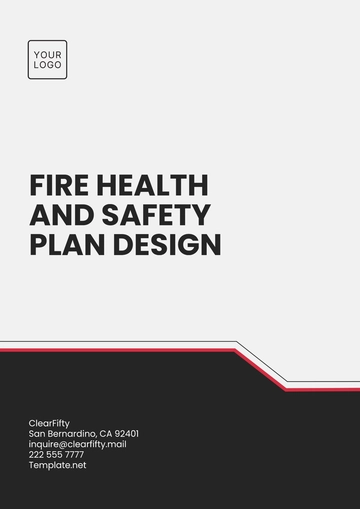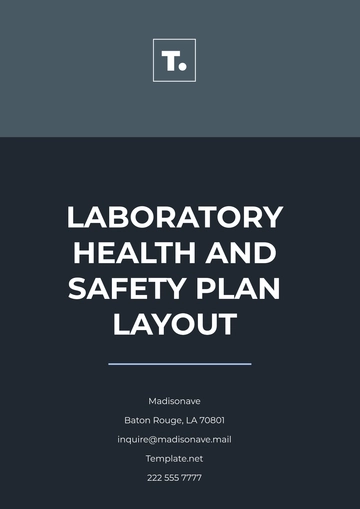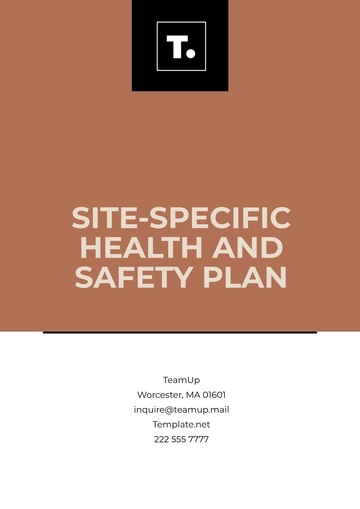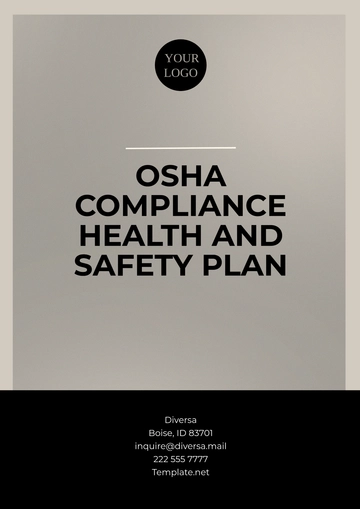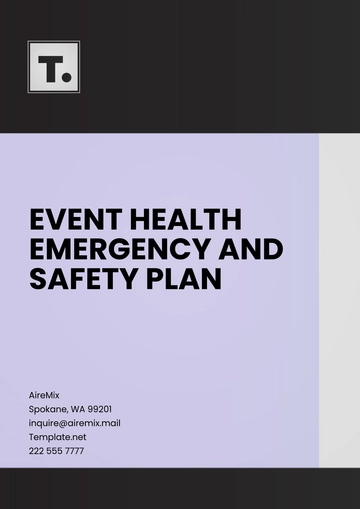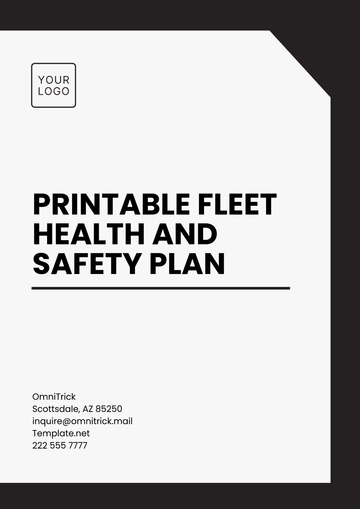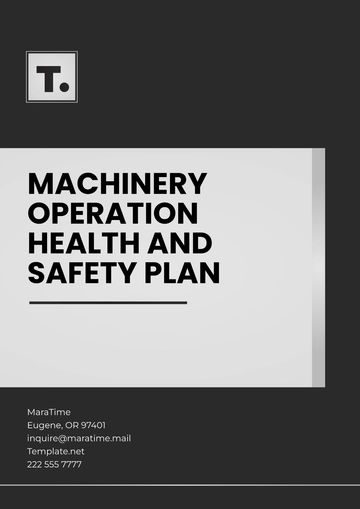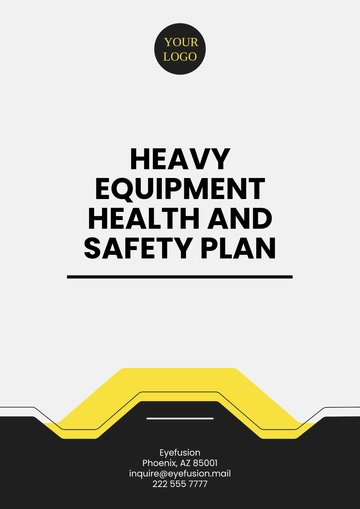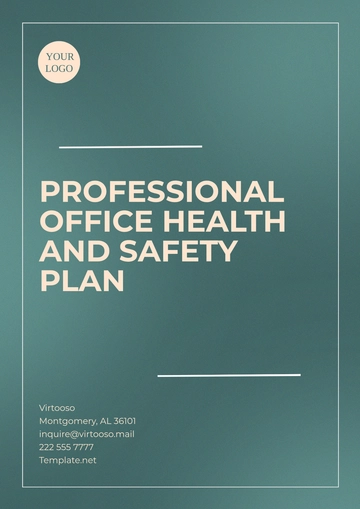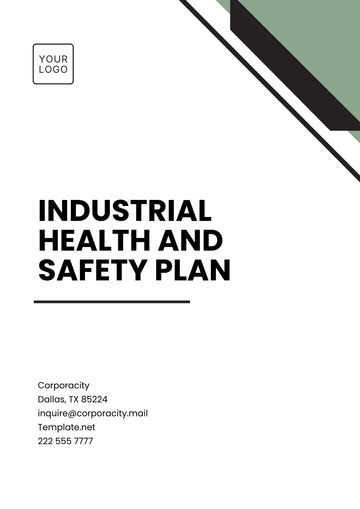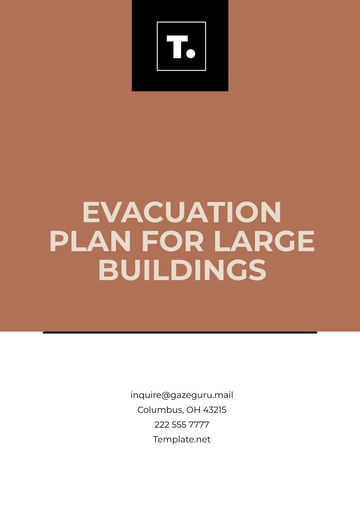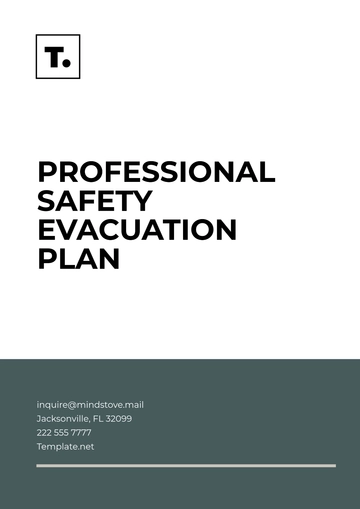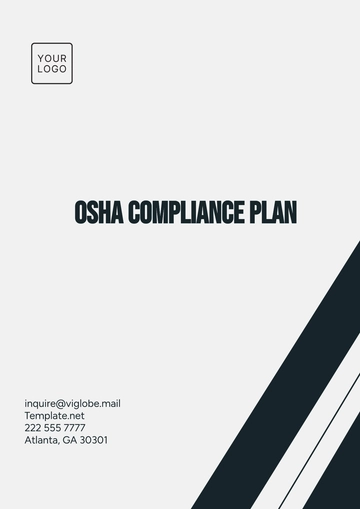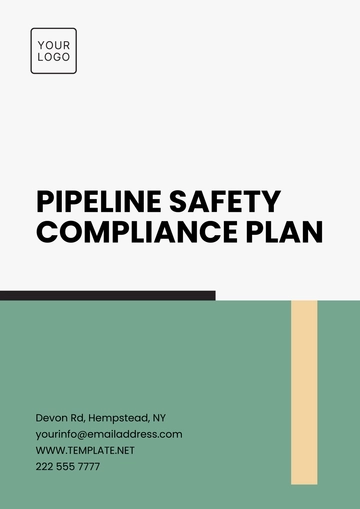Free Work Health And Safety Management Plan
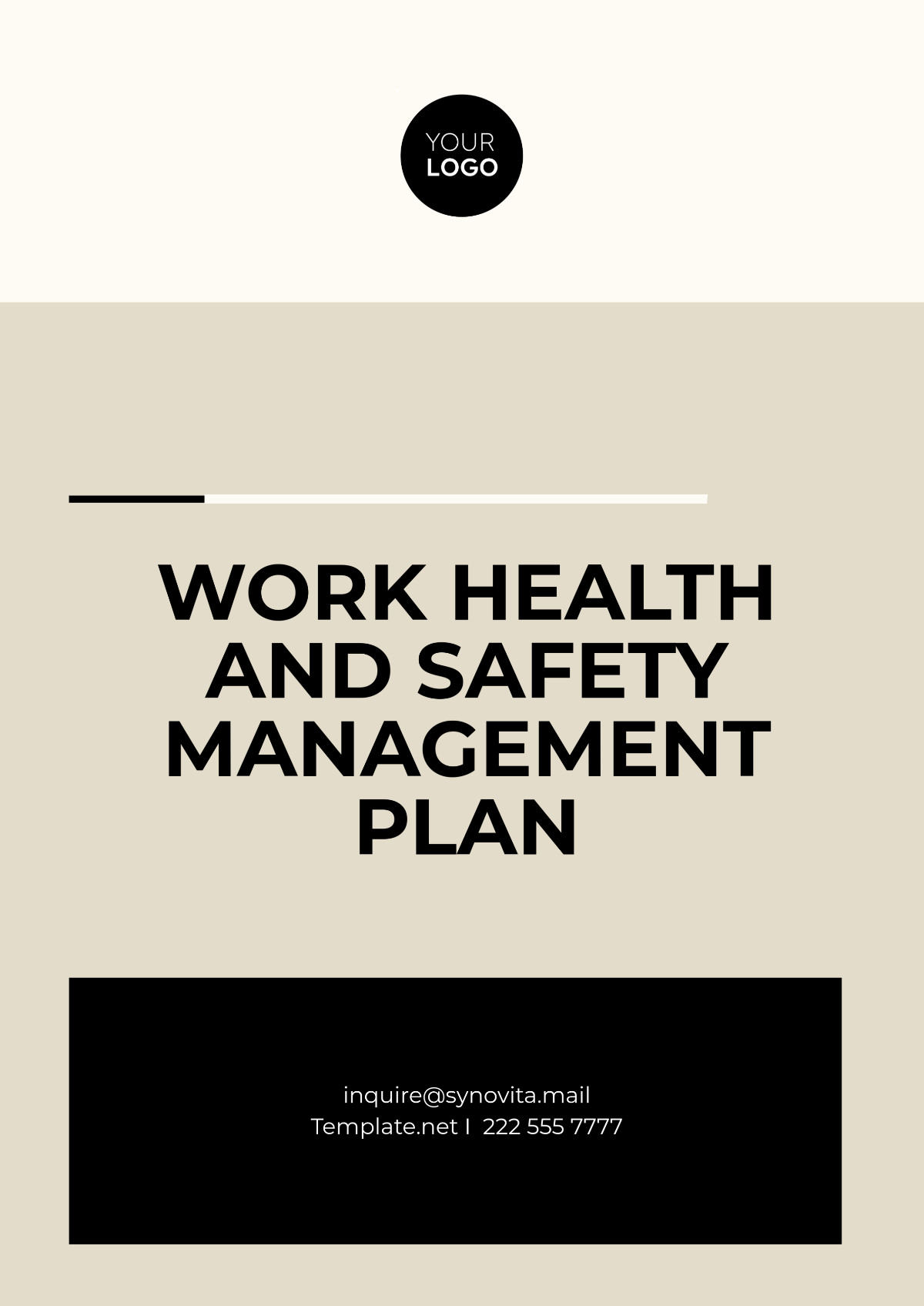
Prepared by: [YOUR NAME]
I. Introduction
This Work Health and Safety Management Plan outlines the framework and strategies for maintaining a safe work environment at [YOUR COMPANY NAME]. This plan ensures compliance with national safety regulations and supports the well-being of all employees and stakeholders.
II. Objectives
Systematically identify and mitigate workplace health and safety risks.
Ensure compliance with local and national safety laws and regulations.
Promote and maintain a safe working environment for all employees and visitors.
Engage stakeholders in continuous improvement regarding health and safety measures.
III. Scope
This section delineates the applicability of the operational plan, emphasizing that it encompasses all aspects of work performed by the employees of [YOUR COMPANY NAME]. Specifically, the plan is binding and relevant to every function, operation, and activity carried out by the staff at the designated company premises located at [YOUR COMPANY ADDRESS].
The scope of this plan includes, but is not limited to, day-to-day operations, administrative tasks, customer interactions, project execution, and any other professional undertakings that occur within the specified location. It ensures that all business processes conducted at this address are performed under the standards and policies outlined in the operational plan.
IV. Risk Management Strategy
A. Risk Identification
Conduct regular workplace audits and inspections.
Gather input and feedback from employees and stakeholders.
Review accident/incident reports to identify high-risk areas.
B. Risk Assessment
Evaluate identified risks based on severity and likelihood of occurrence.
Utilize risk matrices to categorize and prioritize risks.
Document and review findings with the Health and Safety Committee.
C. Risk Control and Mitigation
Implement appropriate control measures for high-priority risks.
Provide training and resources to manage and mitigate risks effectively.
Conduct regular reviews to update control measures as necessary.
V. Roles and Responsibilities
Role | Responsibilities |
|---|---|
Health and Safety Officer | Oversee all aspects of the health and safety program, ensure compliance with laws and regulations, and lead risk assessment processes. |
Management Team | Support the implementation of the health and safety plan, allocate resources, and foster a safety culture within the organization. |
Employees | Follow all safety guidelines and procedures, report unsafe situations, and participate in safety training sessions. |
VI. Training and Communication
Develop a regular training schedule on workplace safety standards and emergency response procedures.
Ensure clear, ongoing communication of safety protocols and updates to all employees.
Utilize tools such as newsletters, meetings, and the company intranet to spread awareness.
VII. Monitoring and Review
A. Objective
The primary objective of this section is to ensure continuous improvement in the workplace's health and safety measures. By regularly assessing the effectiveness of existing safety protocols and making appropriate adjustments, the organization aims to adapt to new challenges, mitigate emerging risks, and enhance overall safety performance.
B. Process
Routine Evaluations:
Frequency: Safety measures will be evaluated on a regular basis, at least quarterly, to ensure their effectiveness and relevance given the evolving workplace environment and external factors.
Methodology: Evaluations will include inspections, audits, employee feedback, incident investigation outcomes, and a review of safety performance indicators (e.g., number of incidents, near misses).
Responsibility: These evaluations will be carried out by designated safety officers or a cross-functional team, depending on the scale and nature of the safety measures.
Incorporating Feedback:
Employee Involvement: Employees at all levels will be encouraged to provide feedback on safety measures through surveys, suggestion boxes, and safety committee meetings.
Analysis of Incidents: All incidents and near-misses will be thoroughly analyzed to identify any failures or shortcomings in current safety protocols. This analysis will help in understanding root causes and preventing future occurrences.
Annual Review:
Health and Safety Committee: The annual review of the organization’s safety measures will be conducted by the Health and Safety Committee. This comprehensive review aims to assess the annual safety performance and identify systemic issues or trends that require attention.
Agenda Items: The review will cover the effectiveness of safety training programs, the adequacy of emergency procedures, compliance with regulatory requirements, the effectiveness of communication of safety policies, and engagement levels within the workforce regarding safety.
Documentation: The findings and decisions of the annual review will be documented thoroughly. This document will include recommendations for improvements, updates to safety policies, and implementation plans.
Making Necessary Adjustments:
Implementation of Changes: Based on the outcomes of the routine evaluations and the annual review, necessary adjustments will be planned and implemented. This may involve updates to safety equipment, revisions of safety protocols, additional training for employees, or enhancements to emergency response strategies.
Timeline and Budget: Each adjustment will be accompanied by a clear timeline and budget allocation to ensure effective implementation.
Communication of Changes:
To Staff: All changes to safety measures will be communicated to employees through memos, emails, meetings, and training sessions. Employees must understand the reasons for changes and how they apply to their roles.
Feedback Mechanism: Post-implementation, a feedback mechanism will be established to assess the employee experience with the new measures, allowing for further refinement.
VIII. Documentation and Reporting
A. Key Activities
Record-Keeping:
What to Record: Document all risk assessments, training sessions, safety meetings, and incident reports. Also, include corrective actions and safety audits.
Format: Use standardized forms and digital systems where possible to ensure consistency and ease of access.
Auditable Records:
Accessibility: Ensure that all documents are organized and easily retrievable for auditing purposes. Maintain both digital and physical copies as required.
Retention: Follow legal and organizational guidelines for record retention periods, ensuring documents are kept as long as necessary but no longer than required.
Regulatory Inspections:
Preparation: Regularly review and update records to ensure they are current and comprehensive, facilitating smooth regulatory inspections.
Availability: Make sure that key personnel know the location of these documents understand their content, ready to present them during inspections.
IX. Conclusion
This WHS Management Plan is a living document that will evolve with the operational dynamics of [YOUR COMPANY NAME]. Continuous commitment from all levels of the organization is crucial to uphold and enhance the safety and well-being of every individual involved with our operations.
- 100% Customizable, free editor
- Access 1 Million+ Templates, photo’s & graphics
- Download or share as a template
- Click and replace photos, graphics, text, backgrounds
- Resize, crop, AI write & more
- Access advanced editor
Work Health and Safety Management Plan Template offered by Template.net. This fully customizable and downloadable template streamlines the development of comprehensive safety plans. Editable in our AI Editor Tool, it adapts seamlessly to your specific needs. Easily printable, this template helps you maintain consistent safety standards across your organization, making it an indispensable tool for proactive safety management.
You may also like
- Finance Plan
- Construction Plan
- Sales Plan
- Development Plan
- Career Plan
- Budget Plan
- HR Plan
- Education Plan
- Transition Plan
- Work Plan
- Training Plan
- Communication Plan
- Operation Plan
- Health And Safety Plan
- Strategy Plan
- Professional Development Plan
- Advertising Plan
- Risk Management Plan
- Restaurant Plan
- School Plan
- Nursing Home Patient Care Plan
- Nursing Care Plan
- Plan Event
- Startup Plan
- Social Media Plan
- Staffing Plan
- Annual Plan
- Content Plan
- Payment Plan
- Implementation Plan
- Hotel Plan
- Workout Plan
- Accounting Plan
- Campaign Plan
- Essay Plan
- 30 60 90 Day Plan
- Research Plan
- Recruitment Plan
- 90 Day Plan
- Quarterly Plan
- Emergency Plan
- 5 Year Plan
- Gym Plan
- Personal Plan
- IT and Software Plan
- Treatment Plan
- Real Estate Plan
- Law Firm Plan
- Healthcare Plan
- Improvement Plan
- Media Plan
- 5 Year Business Plan
- Learning Plan
- Marketing Campaign Plan
- Travel Agency Plan
- Cleaning Services Plan
- Interior Design Plan
- Performance Plan
- PR Plan
- Birth Plan
- Life Plan
- SEO Plan
- Disaster Recovery Plan
- Continuity Plan
- Launch Plan
- Legal Plan
- Behavior Plan
- Performance Improvement Plan
- Salon Plan
- Security Plan
- Security Management Plan
- Employee Development Plan
- Quality Plan
- Service Improvement Plan
- Growth Plan
- Incident Response Plan
- Basketball Plan
- Emergency Action Plan
- Product Launch Plan
- Spa Plan
- Employee Training Plan
- Data Analysis Plan
- Employee Action Plan
- Territory Plan
- Audit Plan
- Classroom Plan
- Activity Plan
- Parenting Plan
- Care Plan
- Project Execution Plan
- Exercise Plan
- Internship Plan
- Software Development Plan
- Continuous Improvement Plan
- Leave Plan
- 90 Day Sales Plan
- Advertising Agency Plan
- Employee Transition Plan
- Smart Action Plan
- Workplace Safety Plan
- Behavior Change Plan
- Contingency Plan
- Continuity of Operations Plan
- Health Plan
- Quality Control Plan
- Self Plan
- Sports Development Plan
- Change Management Plan
- Ecommerce Plan
- Personal Financial Plan
- Process Improvement Plan
- 30-60-90 Day Sales Plan
- Crisis Management Plan
- Engagement Plan
- Execution Plan
- Pandemic Plan
- Quality Assurance Plan
- Service Continuity Plan
- Agile Project Plan
- Fundraising Plan
- Job Transition Plan
- Asset Maintenance Plan
- Maintenance Plan
- Software Test Plan
- Staff Training and Development Plan
- 3 Year Plan
- Brand Activation Plan
- Release Plan
- Resource Plan
- Risk Mitigation Plan
- Teacher Plan
- 30 60 90 Day Plan for New Manager
- Food Safety Plan
- Food Truck Plan
- Hiring Plan
- Quality Management Plan
- Wellness Plan
- Behavior Intervention Plan
- Bonus Plan
- Investment Plan
- Maternity Leave Plan
- Pandemic Response Plan
- Succession Planning
- Coaching Plan
- Configuration Management Plan
- Remote Work Plan
- Self Care Plan
- Teaching Plan
- 100-Day Plan
- HACCP Plan
- Student Plan
- Sustainability Plan
- 30 60 90 Day Plan for Interview
- Access Plan
- Site Specific Safety Plan
